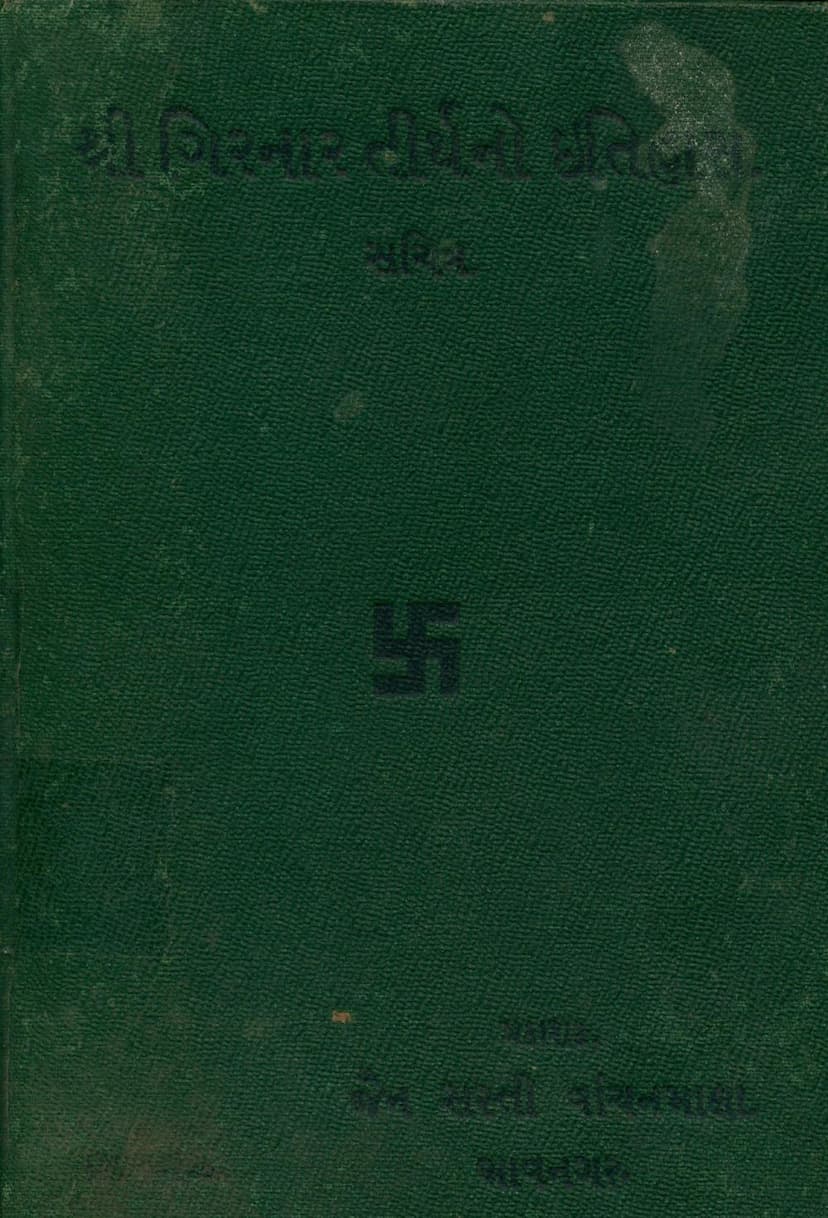Girnar Tirthno Itihas
Added to library: September 1, 2025

Summary
Here's a comprehensive summary of the Jain text "Girnar Tirthno Itihas" (History of Girnar Tirth) based on the provided pages:
Book Title: Shri Girnar Tirthno Itihas (History of Shri Girnar Tirth) Author: Jain Sasti Vanchanmala Publisher: Jain Sasti Vanchanmala
This book, published by Jain Sasti Vanchanmala, is a historical account of the sacred Jain pilgrimage site of Girnar. It delves into the history, significance, and architectural details of the various temples and sites associated with Girnar, primarily focusing on its connection to Lord Neminath, the 22nd Tirthankar.
Key Themes and Content:
- Dedication and Gratitude: The book begins with a dedication to Hiraben, the wife of the late Seth Jivraj Dhanji from Kachhin. She is lauded for her significant philanthropic contributions to religious causes, including the renovation of temples, support for schools, and construction of dharamshalas, totaling approximately seventy-five thousand rupees. The publisher expresses gratitude to her for her support and encouragement in publishing this book, which aims to foster religious values and moral knowledge among women.
- Apostolic Guidance and Philanthropy: The introduction also acknowledges the guidance of Acharya Maharaj Shri Vijaynitivishwarji Maharaj, under whose inspiration about five lakh rupees were spent on the restoration of the Girnar Tirth. Hiraben's contribution of ₹10,000 for this restoration is specifically mentioned.
- Historical Significance of Girnar:
- Girnar, also known as Raivatachal and Siddhgiri, is described as a significant pilgrimage site in Saurashtra, India.
- It is considered sacred because Lord Neminath attained his three Kalyanaks (birth, enlightenment, and nirvana) there.
- The text highlights that 22 out of the 24 Tirthankars of the upcoming Avsarpiṇi period will attain liberation at this very site.
- Architectural and Historical Descriptions of Sites: The book provides detailed descriptions of various locations and temples on Girnar hill, including:
- Temples within the fort (Kot) and outside the fort.
- Theories and legends related to the third, fourth, and fifth peaks.
- Other places of interest and the parikrama (circumambulation) of Girnar.
- Specific temples and structures mentioned include those associated with:
- Lord Neminath (his footprints, temples, and the Samavasaran).
- Ambika Devi (the presiding deity of the Tirth) and Gomedeh Yaksha.
- Chhatra Shila, where Lord Neminath is believed to have renounced worldly life.
- Temples built by historical figures like King Kumarpal, Singaram Soni, and ministers Vastupal-Tejpal.
- The mention of various Tirthankaras whose footprints or idols are present at different locations.
- The Amritjara Parshvanath temple and its significance.
- Temples associated with the Pandavas and their activities at Girnar.
- Historical inscriptions and their importance.
- The text details the restoration efforts undertaken, highlighting the financial contributions received from various individuals and organizations, including the Aden Derasarji and Rangoon Derasarji.
- Theological and Mythological Narratives:
- The history of Girnar is intertwined with stories from Jain scriptures and mythology, focusing on the life and miracles of Lord Neminath.
- The narrative includes the origin of Dwarka and the events leading up to Lord Neminath's renunciation and subsequent liberation.
- The stories of Ambika Devi and Gomedeh Yaksha are presented, explaining their roles as protectors of the Tirth.
- The text also touches upon historical figures and events related to the region, including inscriptions from Ashoka and Skandagupta.
- The Mount Girnar Parikrama and its Features: The book describes the path of the parikrama, highlighting the natural beauty, medicinal plants, and sacred spots encountered.
- Historical Context of Saurashtra: A significant portion of the book is dedicated to the history of Saurashtra, tracing its lineage from ancient times, through the reigns of various dynasties like the Yadavas, Mauryas, Guptas, Solankis, and the Muslim rulers. It discusses the political landscape, city development (like Junagadh and its forts), and the impact of historical events on the region.
- Asoka's Edicts: The book includes translations of Ashoka's edicts found on Girnar, emphasizing his decrees on dharma, animal welfare, and social welfare.
- Renovation and Patronage: The text emphasizes the continuous efforts of various kings, ministers, merchants, and religious leaders throughout history for the preservation and renovation of the Girnar Tirth. It details the contributions made for the ongoing restoration work, encouraging others to participate in this noble cause.
- The "Girnar Mahatmya" (Glory of Girnar): The book draws heavily from texts like the "Girnar Mahatmya" and "Shatrunjay Mahatmya" to describe the spiritual significance and sanctity of Girnar.
Overall Purpose:
"Shri Girnar Tirthno Itihas" serves as a valuable historical and religious document for Jains, offering an in-depth understanding of Girnar's importance as a pilgrimage destination. It aims to educate readers about its rich history, the lives of the Tirthankaras associated with it, the architectural marvels, and the continuous efforts for its preservation and upkeep, inspiring devotion and promoting the spirit of pilgrimage and service.